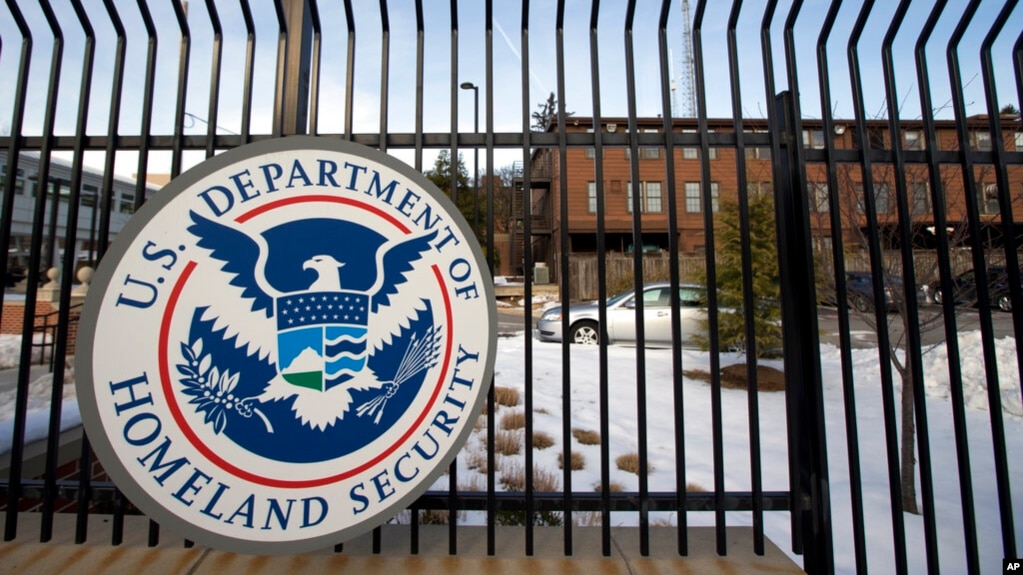By Andrea González-Ramírez, a senior writer for the Cut who covers systems of power.

What’ll happen if Donald Trump wins the presidency in November? His administration will likely follow the road map of Project 2025, a transition plan that includes a laundry list of far-right policies and has been called “authoritarian,” “dystopian,” and a “blueprint for destroying our democracy.”
The plan focuses on obvious conservative priorities ranging from gutting abortion access and LGBTQ+ rights to ending efforts to combat climate change and income inequality. But it also outlines several insidious policies that would change the country as we know it, including what amounts to the most dramatic transformation of the federal-government workforce since the 19th century.
During the Democratic National Convention in Chicago, the party dedicated time to outlining what Project 2025 entails. “They went ahead and wrote down all the extreme things that Donald Trump wants to do in the next four years,” Michigan state Senator Mallory McMorrow said on Monday. “And then they just tweeted it out, putting it out on the internet for everybody to read. “
Below, you’ll find a breakdown of who is behind the transition plan, what they are proposing, and Trump’s disingenuous efforts to distance himself from Project 2025.
What is Project 2025, exactly?
Project 2025 is a transition plan that conservative think tank the Heritage Foundation and other right-wing organizations have put together to serve as a road map for the next Republican administration. The playbook, titled Mandate for Leadership: The Conservative Promise, comprises 900 pages detailing policy proposals for major federal agencies. Though the document does not mention Trump by name, key players involved in the plan’s conception have worked with his administration in the past or have close connections to his team.
Who is behind the Project 2025 plans?
The plan was conceived by the Heritage Foundation in collaboration with more than 100 right-wing organizations, including the anti-abortion and anti-LGBTQ+ legal-advocacy group Alliance Defending Freedom, which overturned Roe v. Wade; the NRA; Moms for Liberty, which has spearheaded attacks on education across the country; and America First Legal, which is led by anti-immigration hawk and former Trump adviser Stephen Miller. The groups have been explicit in their call to completely remake the federal government and the country in their image. In a recent interview with Steve Bannon, Heritage Foundation president Kevin Roberts said, “We are in the process of the second American Revolution, which will remain bloodless if the left allows it to be.”
What does Project 2025 say about reproductive rights?
Project 2025 would have major repercussions for access to reproductive health care, including abortion care and contraception. Some of the transition plan’s proposals include:
- Enforcing the Comstock Act, which would allow the prosecution of people who send abortion pills through the mail. The law isn’t referred to by name in the document, but the footnotes use its code number, 18 U.S.C. § 1461. (Supreme Court Justice Samuel Alito has pulled this trick, too, during oral arguments in recent abortion cases.)
- Rescinding the FDA’s two-decade-old approval of mifepristone, one of the two drugs used in medication abortion.
- Tracking abortion seekers through the Health and Human Services Department by using “every available tool, including the cutting of funds, to ensure that every state reports exactly how many abortions take place within its borders, at what gestational age of the child, for what reason, the mother’s state of residence, and by what method.”
- Rescinding the Biden administration’s guidance on EMTALA, which currently requires hospitals receiving federal funding to provide emergency, life-saving abortions.
- Codifying the Hyde Amendment, which bans the use of federal funds for abortion care, and prohibiting organizations that perform abortions from receiving family-planning grants that help low-income patients access birth control.
- Excluding emergency contraception from the Affordable Care Act’s no-cost coverage mandate.
And education?
The most dramatic proposal related to education would eliminate the Department of Education entirely. The plan also calls for ending Head Start, which has served more than 39 million low-income children since it was implemented nearly 60 years ago. Another proposal would restore the Trump administration’s Title IX regulations, which advocates say place nearly impossible barriers in front of survivors of sexual violence who seek recourse in their schools and universities. Project 2025 would also impact those with student-loan debt, as the authors propose limiting or ending student debt-forgiveness programs, as well as phasing out income-driven repayment plans.
What about LGBTQ+ rights?
The document calls for the federal government to follow a “biblically based” definition of marriage and family, which the group clarifies means “heterosexual, intact marriage.” Other proposals include:
- Requiring that the Health and Human Services Department promote “a family agenda,” explicitly stating that “men and women are biological realities” and that “married men and women are the ideal, natural family structure.”
- Reinstating Trump’s policy banning transgender people from serving in the military, including expelling current service members with “gender dysphoria.”
- Prohibiting public teachers from using a student’s preferred name and pronouns without their parent or guardian’s consent if it doesn’t correspond to their “biological sex.”
- Rescinding federal anti-discrimination protections “on the basis of sexual orientation, gender identity, transgender status, and sex characteristics.”
And climate change?
The transition plan calls for a “whole-of-government unwinding” of the Biden administration’s efforts to fight climate change. The proposals include ending subsidies for wind and solar power, eliminating energy-efficiency standards for appliances, and prioritizing the use of fossil gas and oil. Others would dismantle the National Oceanographic and Atmospheric Administration (NOAA); get rid of the Clean Energy Corps, which is tasked with researching, developing, and deploying solutions to climate change; and prohibiting that greenhouse-gas emissions be taken into consideration when authorizing gas pipelines and liquefied natural-gas export facilities.
How about immigration?
The plan goes much further than Trump’s attacks on immigration during his last term. The proposals include:
- Increasing the standard of credible fear for asylum seekers.
- Limiting which immigrants can qualify for employment authorization.
- Eliminating T and U visas, which are available for victims of certain crimes, including human trafficking.
- Blocking Dreamers — people who were brought to the U.S. as children without authorization, and who are protected from deportation under DACA — from having access to federal student-loan programs.
- Making it harder for Dreamers to renew their DACA permit by having immigration agencies deprioritize those cases.
- Pushing Congress to end the Flores Settlement Agreement, which limits how long migrant children can stay in detention and requires them to be in the “least restrictive conditions” possible while in custody.
Is there more?
Yes. The most dramatic proposal in Project 2025 calls for the reclassification of tens of thousands of federal workers, which would allow Trump to fire career public servants and replace them with political appointees who side with his administration. “Our goal is to assemble an army of aligned, vetted, trained and prepared conservatives to work on Day One to deconstruct the Administrative State,” the authors of the document say in the foreword. It’d be the most dramatic change in the federal workforce since the 1880s. The implications can’t be overstated: Imagine a pandemic happens again. Many workers at key federal agencies would be Trump loyalists, rather than high-skilled experts who’ve remained in their positions from administration to administration regardless of their political affiliation.
Project 2025 also calls for ending the independence of the Justice Department and the FBI; slashing Medicaid funding; accelerating the production of nuclear weapons; changing the tax code to favor high-earning individuals in a way that’d hurt low-income people; and making it harder for Americans to unionize.
What has Trump said about Project 2025?
Trump has tried to distanced himself from the transition plan, posting on Truth Social on July 5: “I know nothing about Project 2025. I have no idea who is behind it.”
That is demonstrably false. Not only do the policies outlined in the Trump campaign’s Agenda 47 mirror most of Project 2025’s main proposals, but the top directors of the transition plan — Paul Dans, Spencer Chretien, and Troup Hemenway — worked in the Trump administration. Many of Mandate’s authors are also Trump alumni. The list includes Housing secretary Ben Carson, Trump’s deputy chief of staff Rick Dearborn, director of the Health and Human Services’ Office for Civil Rights Roger Severino, acting secretary of Defense Christopher Miller, Homeland Security official Gene Hamilton, assistant to the president Peter Navarro, and Office of Management and Budget director Russ Vought.
In a secretly-recorded video, published on August 15 by the non-profit Centre for Climate Reporting, Vought admitted that not only had he been in contact with Trump in recent months, but the former president has also “been at our organization, he’s raised money for our organization, he’s blessed it.” He added: “He’s very supportive of what we do.” He went on to say that Trump’s denials were just a “very, very conscious distancing himself from a brand. It’s interesting, he’s in fact not even opposing himself to a particular policy.”
And despite Trump’s half-hearted attempt to disavow the Heritage Foundation, the organization itself boasts in Project 2025’s website that “the Trump administration relied heavily” on its previous Mandate document, “embracing nearly two-thirds of Heritage’s proposals within just one year in office.” So there’s plenty of reason to believe a second Trump administration would do the same.








